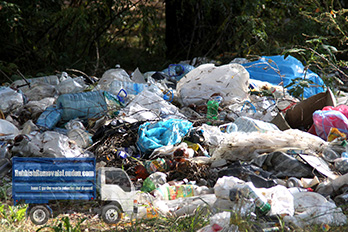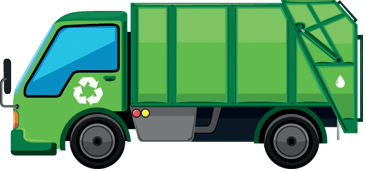Efficiency and functionality are very important when it comes to collecting and removing domestic and commercial waste using specialised vehicles. There are different types of rubbish removal vehicles, or trucks as they are commonly known. Each category vehicle has a specific capacity, and utilises a different waste collection technology. The size and capacity of a rubbish removal truck is determined by the type and volume of waste it needs to collect and accommodate. After all there is a huge difference in the rubbish that is collected in an industrial area and the waste cleared in Westminster, for example.
General household and office waste
 In most cases, general household and office waste is collected in smaller sized rubbish removal vehicles, usually specially fitted vans. In the UK and some parts of Europe, these are called cage vans, or tipper cage vans. Rubbish removal vans used in urban areas can be:
In most cases, general household and office waste is collected in smaller sized rubbish removal vehicles, usually specially fitted vans. In the UK and some parts of Europe, these are called cage vans, or tipper cage vans. Rubbish removal vans used in urban areas can be:
- Short, medium or long wheelbase depending on specific requirements;
- Standard load or heavy duty in regards to their hauling capacity (generally rubbish removal vans vary between 3.5 and 5 tons for heavy duty versions);
- Flat bed, cage or cage tipper – flat top vans are mainly used for rubble and garden waste, cage vans can accommodate bulkier waste and large objects of all kinds, cage tipper vans are fitted with a hydraulic mechanism allowing tipping of waste at disposal sites;
Municipal & industrial solid waste
Collection and disposal of municipal waste on regular basis is usually a service maintained and provided by local authorities or delegated to a specialised waste management service provider licensed and qualified to perform such operations. In this case, the vehicles in use are larger and technologically more advanced than the rubbish removal vans mentioned in the previous section of this article. Specialised rubbish removal and disposal trucks are expensive pieces of machinery and require qualification and training on behalf of their drivers / operators. The main types of rubbish removal trucks utilised around the world are:
- Front loaders – used mainly for industrial waste removal and transportation, front loaders utilise a fork-like device fitted at the front of the vehicle which locks onto, and lifts a large sized solid waste container and then tips its contents in a larger, covered container fitted behind the cabin.
- Rear loaders – used predominantly in residential areas, these trucks are fed rubbish from the back by waste collection technicians. One version of these vehicles is manually fed rubbish bags by staff, the other version features a grab system in order to clamp and tip rubbish bins inside the truck’s waste container.
- Automated side loaders – these are used in many countries, again for servicing residential areas. In this case the truck features a side loading system using hydraulics to lift and tip different size bins (mobile rubbish bins) through an opening, which then feeds garbage into a waste processing (compacting system) inside the vehicle.
- Pneumatic collection vehicles – these trucks suck waste from specially fitted underground containers through a high capacity nozzle.
- Grapple trucks – these vehicles are designed to deal with large volumes of heavy waste as they are fitted with heavy duty grapples able to lift larger amounts of waste in one go. Mainly used for industrial and construction waste removal.

